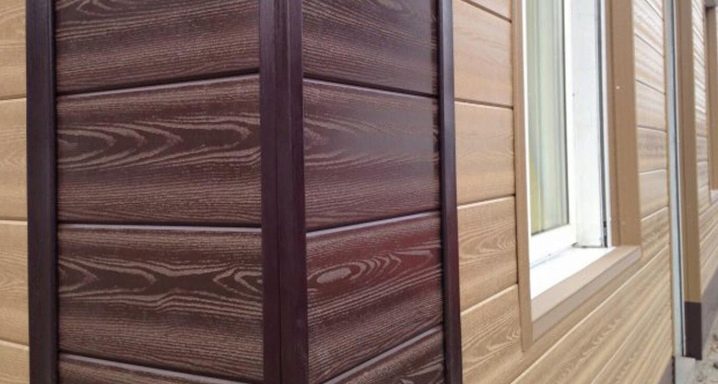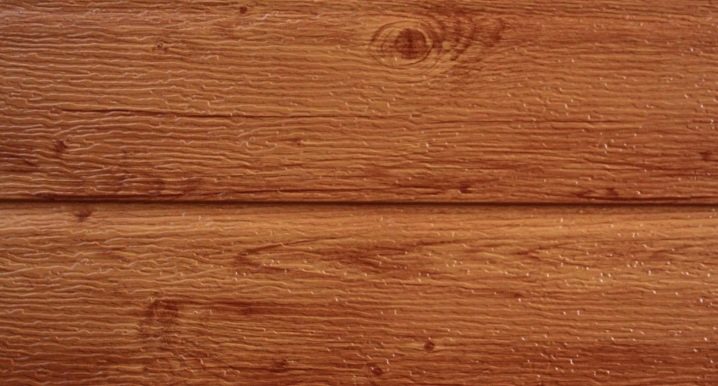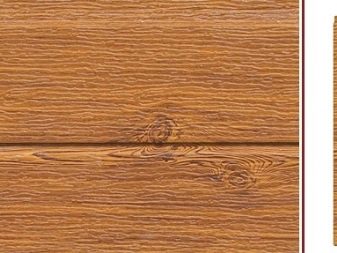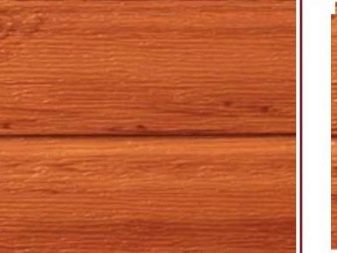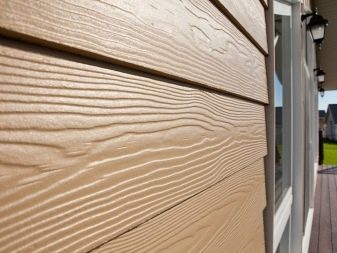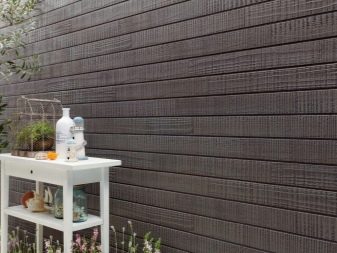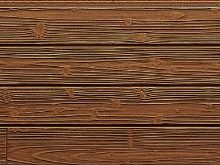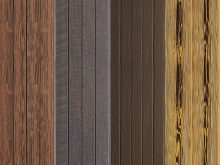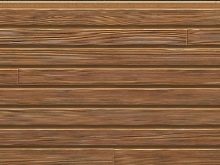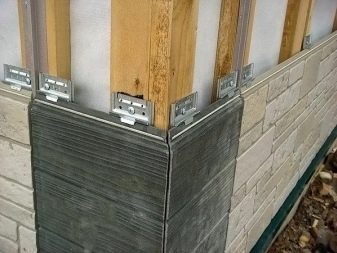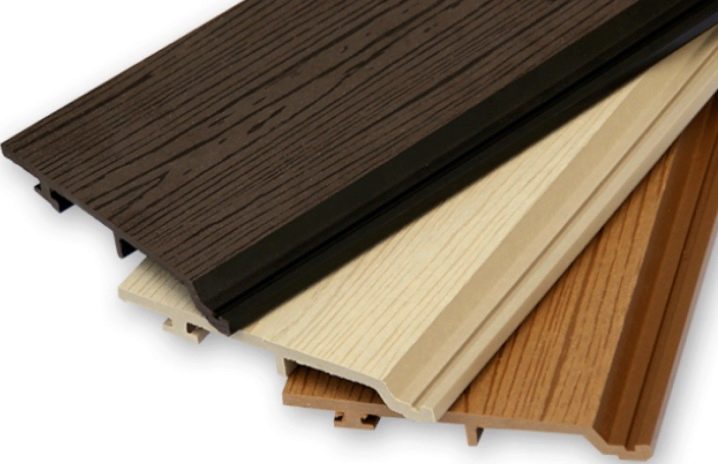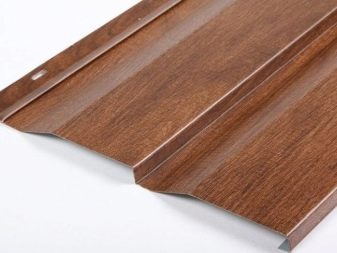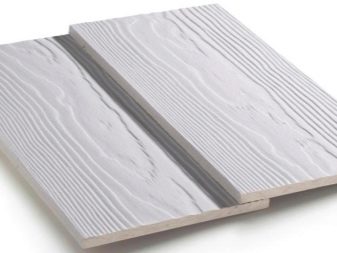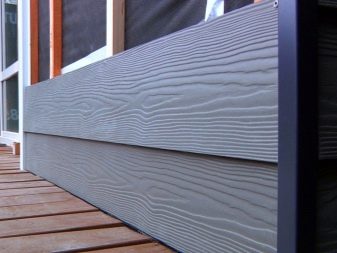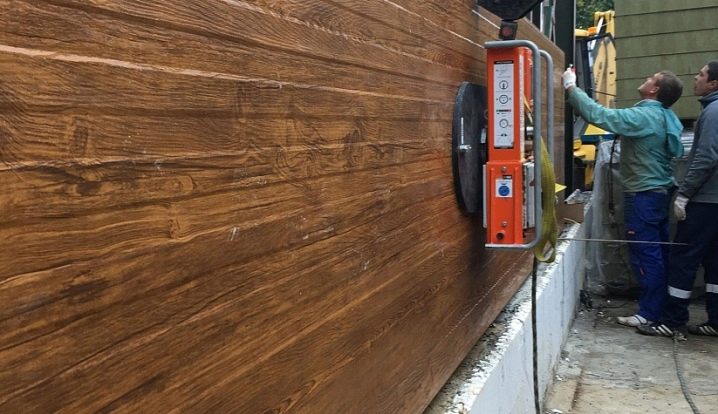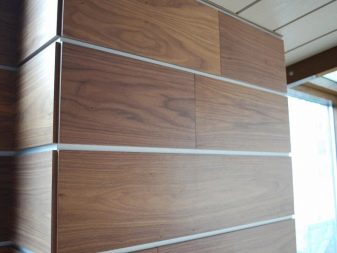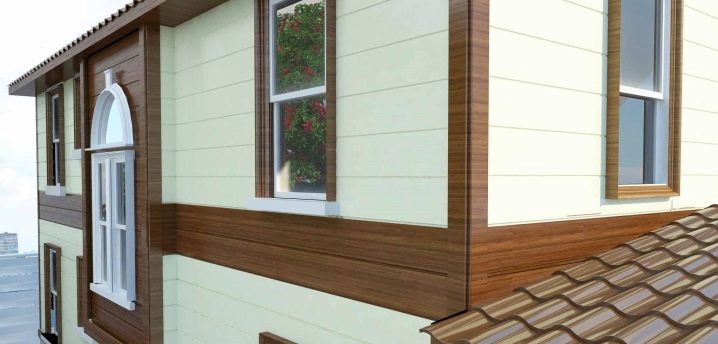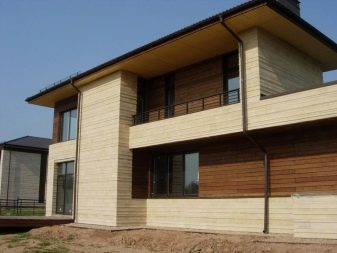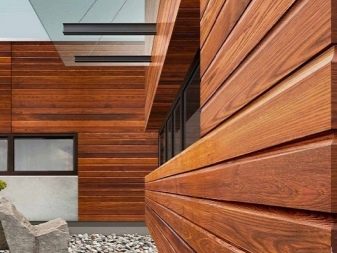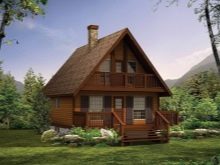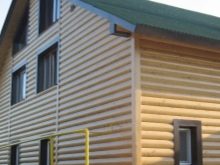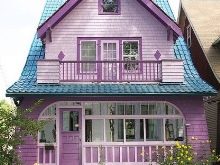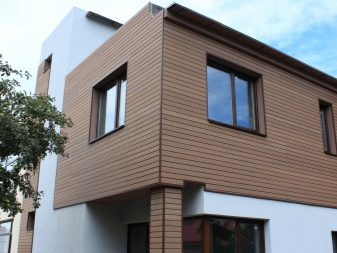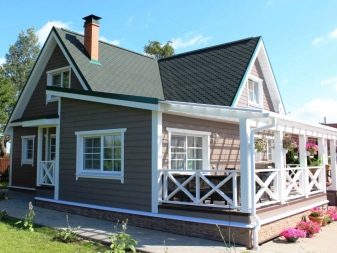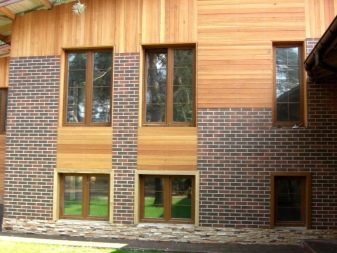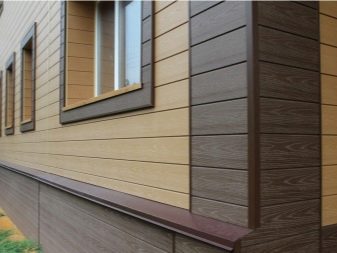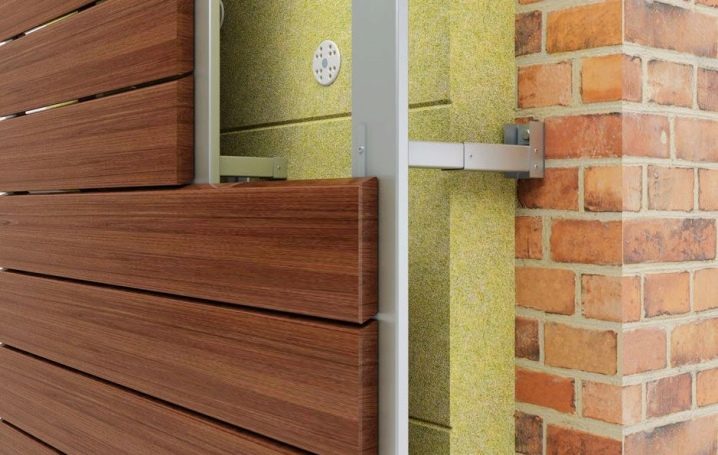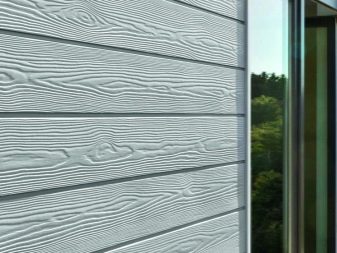Front panels under the tree: features and benefits
Facing the facade with a tree always looks stylish and respectable. However, the cost of such a finish is high, and the tree needs constant protection. Due to high moisture permeability, fire hazard and tendency to rot, the material cannot serve for a long time. An excellent alternative are front panels made of durable materials that imitate wooden texture.
What it is?
Front panels "under the tree" are slabs or siding boards, the front side of which imitates a particular type of wood. The basis of this material may be siding, metal profiles, fiber cement and other materials. As a rule, such panels perform not only decorative functions, but also have high performance properties.
Unlike wood, such materials are non-combustible (for example, fiber cement panels) or more resistant to burning. Modern materials for the facade are characterized by low moisture absorption, and also have a waterproofing base that prevents the penetration of moisture from the walls into the thickness of the material.
Facing panels also compare favorably with wood frost resistance and weather resistance. During the entire period of operation of the panel from a bona fide manufacturer, they retain their color and original appearance. It is worth noting that the surface of natural wood darken after the first winter.
Modern panels "under the tree" are eco-friendly and biostable. If a tree is susceptible to infection in tree beetles, and when damp, it becomes covered with mold, then using panels such problems can be avoided. High rates of heat and sound insulation are also an advantage of the panels, and thanks to the installation features, it is possible to lay a layer of insulation between the material and the walls of the building.
As for the appearance, thanks to modern technology, plastic, metal siding and fiber cement panels “under the tree” imitate the shades and texture of wood as accurately as possible.Even on closer examination, it is not always possible to see that the luxurious wooden surface is just an imitation.
The material is easy to attach, due to the equipment panels locking mechanism or grooves. Thanks to them, the solidity of the structure and the resistance of the facade to wind loads are also achieved.
As is known, wood shrinks (sometimes up to 15-20%), which leads to distortion of the structure. The use of panels with the texture of wood allows you to mount them without taking into account the deformation in the process of shrinkage. After facing there is no need to wait 6-12 months before proceeding to further decorating the walls.
Finally, unlike natural wood, the panels do not need regular maintenance and treatment with special compounds. Most of them are capable of self-cleaning, others need only be periodically washed with water. The service life of the panels varies from 20 to 50 years.
Kinds
Depending on the material from which the panels for exterior decoration of the house are made, there are several types.
Plastic
Such panels are represented by vinyl and acrylic varieties. They are characterized by moisture resistance, weather resistance, frost resistance. Products are strong enough, however, with a significant mechanical action can crack.They are considered the lightest panels, so do not require the strengthening of the facade.
Metallic
Metal siding panels have a large margin of safety, compared with analogs of PVC. This causes high rates of wear resistance, a long period of operation. The basis of products - aluminum profiles or "stainless steel". By itself, the metal is susceptible to corrosion, but manufacturers conduct high-quality anti-corrosion protection of the material, so that it is not afraid of moisture and the appearance of rust.
Fiber cement
The material is based on purified cellulose and cement mortar. Sometimes, in order to increase the strength, quartz sand is added to the composition. The result is a durable material, the service life of which can reach 100 years.
Low moisture resistance, fire resistance (fiber cement does not burn or melt), frost resistance up to 100 cycles, as well as high thermal insulation properties combined with affordability - all this causes the increasing popularity of fiber cement products. Thanks to ceramic spraying, the panels also exhibit high resistance to UV exposure.
The disadvantage of the material is a fairly large weight (on average 15-25 kg / m kV). It is worth noting that plastic analogs weigh only 3-5 kg / m kV. This fact requires the use of a solid foundation.
Separately, you can select multilayer sandwich panels, a distinctive feature of which is a layer of insulation. Due to this, the veneered surfaces do not need to install a layer of insulating material. Sandwich panels allow you to quickly build a neat ventilated facade.
There are wood-polymer "sandwiches" made from waste woodworking enterprises. Shavings and sawdust are given a uniform size (like wood dust), after which the mixture is poured with polymer resins. As a result, a material appears that looks like a chipboard plate, but has moisture resistance, strength, and biostability. There are also laminated surfaces that have even greater resistance to moisture and a more “elegant” appearance.
Veneered panels are rarely used, which is explained by their relatively high cost. The material is a base of paper-cellulose composite,on the front surface of which is applied a layer of veneer made of precious wood. From above, it is covered with a protective polymer layer.
Depending on the purpose of the material for exterior decoration, facade and basement panels are distinguished. The latter are fixed in the bottom, basement of the building. The basement is subject to higher mechanical loads, the active influence of moisture, pollution, road chemicals, and freezing. It is logical that the material for finishing this section of the facade should have higher performance characteristics.
Basement panels fully comply with these requirements. In each line (plastic, metal, fiber cement) there are collections of such products. Despite this, experts recommend to refrain from using plastic products in the lower part of the building. Preference should be given to stronger and more durable metal analogs, as well as on the basis of fiber cement.
Design
Panels can imitate any wooden surface. The most popular are the panels under the timber, rounded logs, eurolining, shipboard or another board.Thanks to the use of inexpensive (compared to wood) wall panels, it is possible to transform an unsightly building into a respectable building decorated with such rare species of wood as oak, beech, and cedar.
The use of panels "under the tree" is primarily suitable for buildings in the "rustic" style. It can be both a traditional Russian log house and alpine chalet houses, as well as refined buildings in the spirit of Provence.
For the style of Provence fit bright colored panels, having the appearance of painted boards. For the Scandinavian style, it is preferable to use bleached boards, as well as painted in gray, graphite shades of analogues.
Wooden slabs are perfectly combined with stone or metal surfaces, as well as materials that imitate plaster.
As a rule, the lower part of country houses is laid out of stone (or rather, panels that imitate natural stone), the rest of the facade is made of panels under the tree.
Originally looks like a combination of panels, imitating lining, and brickwork. Avoid the monotony of wooden surfaces, as well as bring dynamism to the exterior, allowing for a different orientation of the “wall paneling”.
When using only wood-like panels, it is recommended to combine 2 contrasting or 2-3 close shades. So you can add the facade volume, emphasize architectural elements.
Installation Features
Despite the fact that the installation is quite simple, it must be made according to certain requirements.
Fastening products "under the tree" can be made directly on the walls or on the previously created crates. The latter is wooden or metal (preferred because it does not require additional processing). Mounting on the crate allows you to hide defects and surface irregularities, keep the air gap between the facade and the wall, and also produce external insulation of the facade, laying a layer of insulating material between the crate and the wall.
First of all, the starting profile is mounted on the crate, which serves as the beginning for laying the remaining plates. It is fixed at a distance of 10 cm from the corners. Plates are stacked upwards. Additional elements and accessories are used for the design of corners, ledges, platbands and other elements of the facade.
When purchasing material, it is important not to forget about the need for a stock (for the likelihood of marriage, cutting). As a rule, to the main number of panels add another 10-15% of the stock.
A detailed overview of fiber cement siding CEDRAL is waiting for you in the video below.
